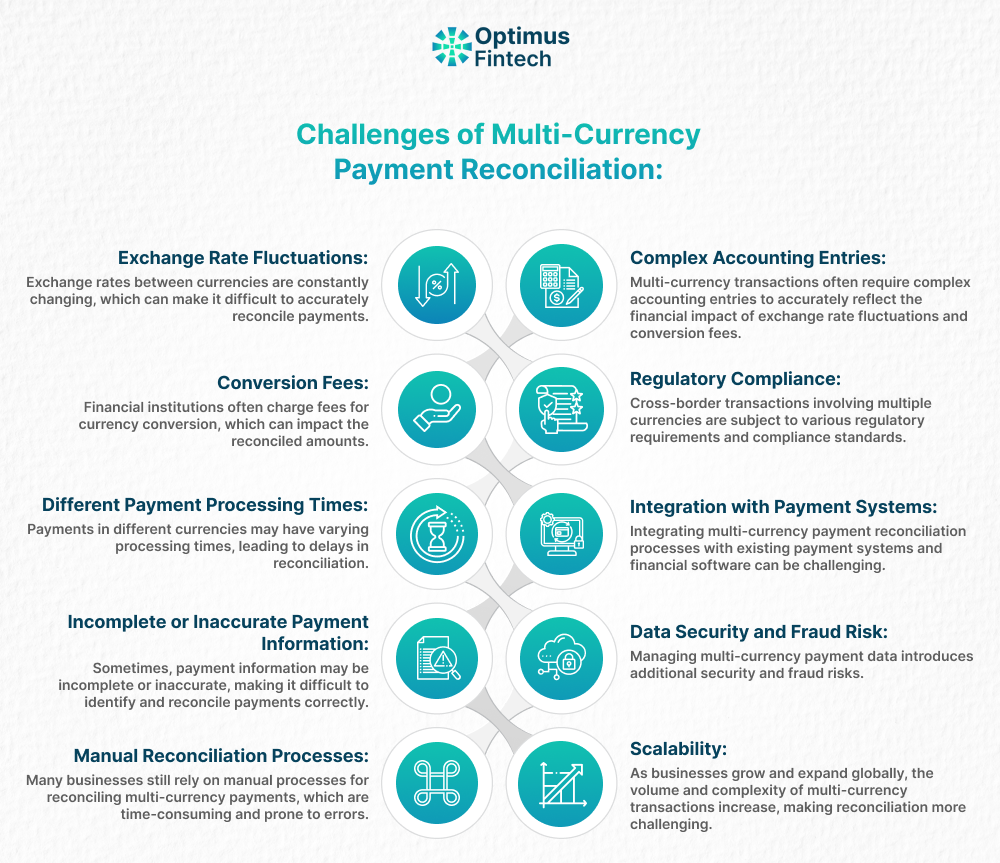Artificial Intelligence
Struggling to reconcile payments across currencies? Here's how AI can assist
Discover how AI-powered solutions can streamline the reconciliation of multi-currency payments, optimizing accuracy and efficiency for financial operations.

Amrit Mohanty
Mar 26, 2024 (Last Updated: Nov 13, 2025)

Recent estimates suggest that consumer-initiated cross-border payments will experience nearly double the growth rate compared to their B2B counterparts from 2023 to 2030. Projections indicate a significant 43% increase in the B2B cross-border payments market, driven primarily by the expansion of B2B e-commerce. Despite being a smaller market segment, consumer cross-border payments are expected to grow impressively by approximately 80% over the next six years.
Yes, in today's interconnected global marketplace, businesses engage in transactions across borders and currencies with increasing frequency. While this globalization brings opportunities for growth and expansion, it also introduces complexities in financial operations, particularly in the realm of payment reconciliation. Manual payment reconciliation methods, which rely on human intervention to match transactions across different currencies and accounts, are often inadequate for handling the sheer volume and diversity of transactions efficiently. These methods are not only time-consuming but also prone to errors, posing significant challenges for businesses striving to maintain financial accuracy and integrity.
However, amidst these challenges, the rapid advancements in artificial intelligence (AI) offer promising solutions to streamline and automate the reconciliation of multi-currency payments. AI, with its ability to process vast amounts of data rapidly and identify patterns and anomalies with precision, presents an opportunity for businesses to overcome the hurdles associated with multi-currency reconciliation. Let's delve deeper into how AI can address these challenges:
Challenges of Multi-Currency Payment Reconciliation:

A 2022 survey in which banks and fintech companies were asked to rate the desire for payment enhancements among their clients echoed this opinion. Cross-border efficiency was a challenge for nearly three out of ten respondents when it came to payment. Reconciling multi-currency payments poses significant challenges, primarily stemming from the intricate nature of managing various currencies concurrently. Here are some of the key challenges:
- Exchange Rate Fluctuations: Exchange rates between currencies are constantly changing, which can make it difficult to accurately reconcile payments. Fluctuations in exchange rates can lead to discrepancies between the expected and actual amounts received, affecting the reconciliation process.
- Conversion Fees: Financial institutions often charge fees for currency conversion, which can impact the reconciled amounts. These fees need to be taken into account during the reconciliation process to ensure accurate accounting and reporting.
- Different Payment Processing Times: Payments in different currencies may have varying processing times, leading to delays in reconciliation. This can make it challenging to match payments and receipts in a timely manner, especially when dealing with large volumes of transactions.
- Incomplete or Inaccurate Payment Information: Sometimes, payment information may be incomplete or inaccurate, making it difficult to identify and reconcile payments correctly. Missing or incorrect details, such as payment references, currency codes, or amounts, can hinder the reconciliation process.
- Manual Reconciliation Processes: Many businesses still rely on manual processes for reconciling multi-currency payments, which are time-consuming and prone to errors. Manually matching payments across different currencies increases the likelihood of mistakes and makes it challenging to maintain accuracy.
- Complex Accounting Entries: Multi-currency transactions often require complex accounting entries to accurately reflect the financial impact of exchange rate fluctuations and conversion fees. Handling these entries correctly requires a deep understanding of accounting principles and currency exchange mechanics.
- Regulatory Compliance: Cross-border transactions involving multiple currencies are subject to various regulatory requirements and compliance standards. Ensuring compliance with regulations related to currency exchange, taxation, and reporting adds another layer of complexity to the reconciliation process.
- Integration with Payment Systems: Integrating multi-currency payment reconciliation processes with existing payment systems and financial software can be challenging. Ensuring seamless data flow and compatibility between different systems is essential for efficient and accurate reconciliation.
- Data Security and Fraud Risk: Managing multi-currency payment data introduces additional security and fraud risks. Unauthorized access to sensitive financial information or fraudulent transactions can disrupt the reconciliation process and have significant financial implications.
- Scalability: As businesses grow and expand globally, the volume and complexity of multi-currency transactions increase, making reconciliation more challenging. Scalability becomes a concern, requiring robust systems and processes capable of handling larger transaction volumes efficiently.
How AI Addresses these Challenges:
Automated Data Extraction: AI-powered solutions use techniques such as optical character recognition (OCR) and natural language processing (NLP) to automatically extract payment data from various sources, such as invoices, receipts, bank statements, and transaction records. By eliminating the need for manual data entry, AI reduces errors and saves valuable time in the reconciliation process.
Intelligent Matching Algorithms: AI algorithms employ advanced pattern recognition techniques to analyze transaction details and accurately match payments across different currencies, accounts, and timeframes. These algorithms can handle large volumes of transactions efficiently, even in cases where transaction descriptions are incomplete or ambiguous, improving reconciliation accuracy.
Real-Time Currency Conversion: AI-driven platforms leverage real-time exchange rate data from reliable sources to perform currency conversions instantly. By accessing up-to-date exchange rates, AI ensures accurate reconciliation regardless of currency fluctuations, minimizing the impact of exchange rate variations on the reconciliation process.
Predictive Analytics: AI algorithms analyze historical payment data to identify patterns, trends, and anomalies, enabling them to predict future transactions and detect potential reconciliation issues proactively. By leveraging predictive analytics, organizations can anticipate reconciliation challenges and take preemptive actions to address them, improving overall reconciliation efficiency and accuracy.
Adaptive Learning: AI systems utilize machine learning algorithms to continuously learn from user interactions and feedback, improving their accuracy and efficiency over time. By adapting to evolving reconciliation requirements and user preferences, AI-powered solutions can enhance their performance and effectiveness in handling multi-currency payment reconciliation tasks.
Implementation and Integration:
Integrating AI-powered payment reconciliation solutions into existing payment systems is crucial for maximizing efficiency and minimizing disruption. Businesses should consider the following steps:
Assess Needs: Evaluate the specific reconciliation challenges and requirements of your business, considering factors such as transaction volume, currency diversity, and existing infrastructure.
Choose the Right Solution: Select an AI-powered reconciliation platform or software that aligns with your business needs and offers features such as automated data extraction, intelligent matching, and real-time currency conversion.
Integration with Existing Systems: Ensure seamless integration with existing payment systems, accounting software, and ERP systems to streamline data flow and minimize manual intervention.
Training and Adoption: Provide adequate training to employees on using the AI-powered reconciliation tools effectively, emphasizing the benefits of automation and addressing any concerns or resistance to change.
Continuous Improvement: Monitor performance metrics, gather feedback from users, and collaborate with AI solution providers to fine-tune algorithms and improve reconciliation accuracy and efficiency over time.
Conclusion:
In an increasingly globalized business environment, efficient multi-currency payment reconciliation is essential for maintaining financial integrity and competitiveness. By harnessing the power of AI, businesses can streamline payment reconciliation processes, reduce errors, and unlock valuable insights from payment data. Embracing AI-driven solutions enables organizations to adapt to evolving market dynamics, enhance operational efficiency, and drive sustainable growth in the digital age.

